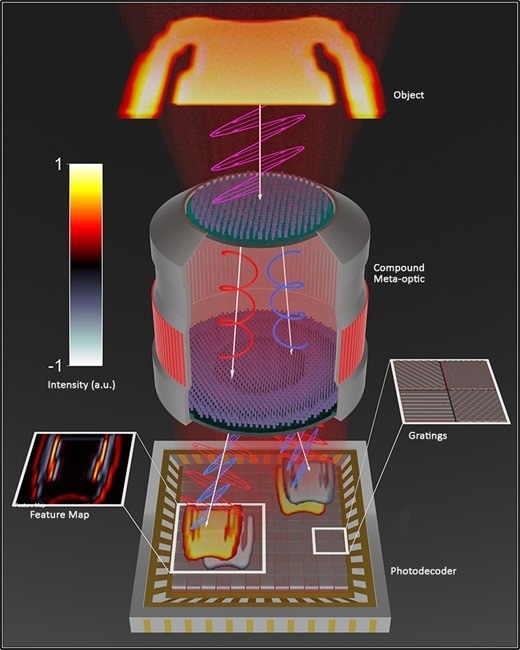Researchers from Vanderbilt University have developed a front-end lens, or meta-imager, that could eventually replace conventional imaging optics in machine-vision applications. It can produce images more quickly and with less power consumption.

Image Credit: Vanderbilt University
By reducing the thickness of the optical lens by nanostructuring, lens material could be used as a meta-imager filter, allowing for more efficient front-end processing and information encoding.
Together with a digital backend, the images are intended to transfer computationally demanding tasks to high-speed, low-power optics. The generated images could find extensive use in the government and defense sectors, as well as in security and medical systems.
A study describing the proof-of-concept meta-imager developed by colleagues and professor Jason Valentine of mechanical engineering, deputy director of the Vanderbilt Institute of Nanoscale Science and Engineering, was published in Nature Nanotechnology on January 4th, 2023.
Additional authors include computer science assistant professor Yuankai Huo, mechanical engineering postdoctoral scholar Xiamen Zhang, Hanyu Zheng, Ph.D.'23, who is currently a postdoctoral associate at MIT, computer science Ph.D. candidate Quan Liu, and Senior R&D staff member Ivan I. Kravchenko of Oak Ridge National Laboratory’s Center for Nanophase Materials Sciences.
The authors point out that this design of a meta-imager could be extremely parallel and help close the gap between digital systems and the natural world.
Thanks to its compactness, high speed and low power consumption, our approach could find a wide range of applications in artificial intelligence, information security, and machine vision applications.
Jason Valentine, Professor, Mechanical Engineering, Vanderbilt University
The first step of the team’s meta-optic design was to optimize an optic made up of two metasurface lenses, which are used to encode data for a specific object categorization job.
Based on networks trained on a database of handwritten digits and a library of images of apparel frequently used to test different machine learning systems, two versions were created. In handwritten numerals, the meta-imager obtained 98.6% accuracy, whereas in clothing images, it achieved 88.8% accuracy.
The National Institutes of Health (NIH), ONR, the Defense Advanced Research Projects Agency (DARPA), and Naval Air Systems Command (NAVAIR) provided funding for the study.
Journal Reference:
Zheng, H., et. al. (2023) Multichannel meta-imagers for accelerating machine vision. Nature Nanotechnology. doi:10.1038/s41565-023-01557-2.